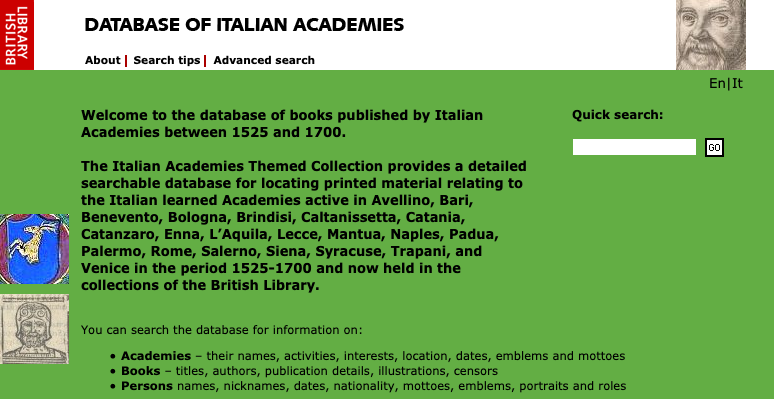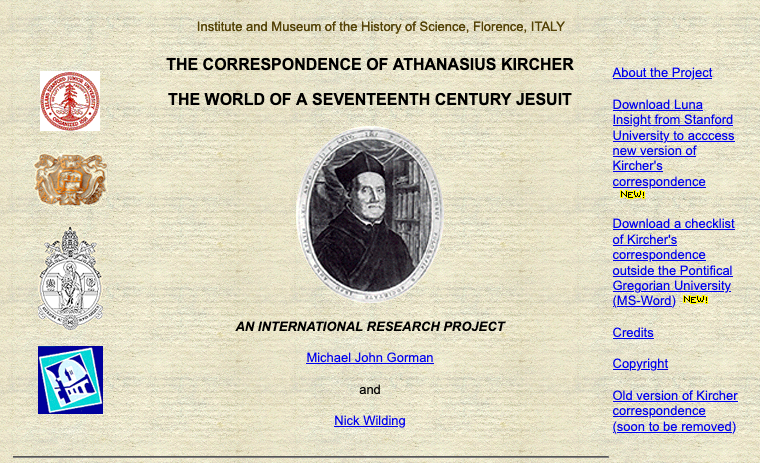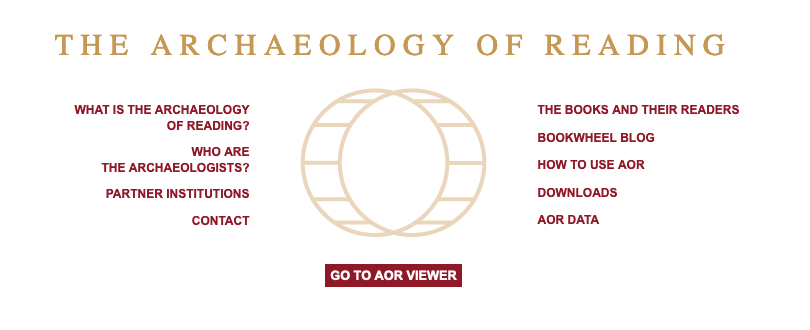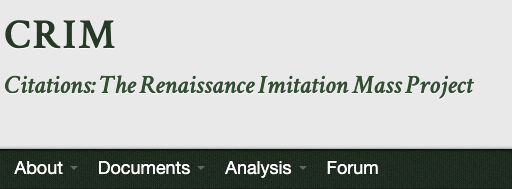
Provides a detailed searchable database for locating printed material relating to the Italian learned Academies active in Avellino, Bari, Benevento, Bologna, Brindisi, Caltanissetta, Catania, Catanzaro, Enna, L’Aquila, Lecce, Mantua, Naples, Padua, Palermo, Rome, Salerno, Siena, Syracuse, Trapani, and Venice in the period 1525-1700 and now held in the collections of the British Library.









